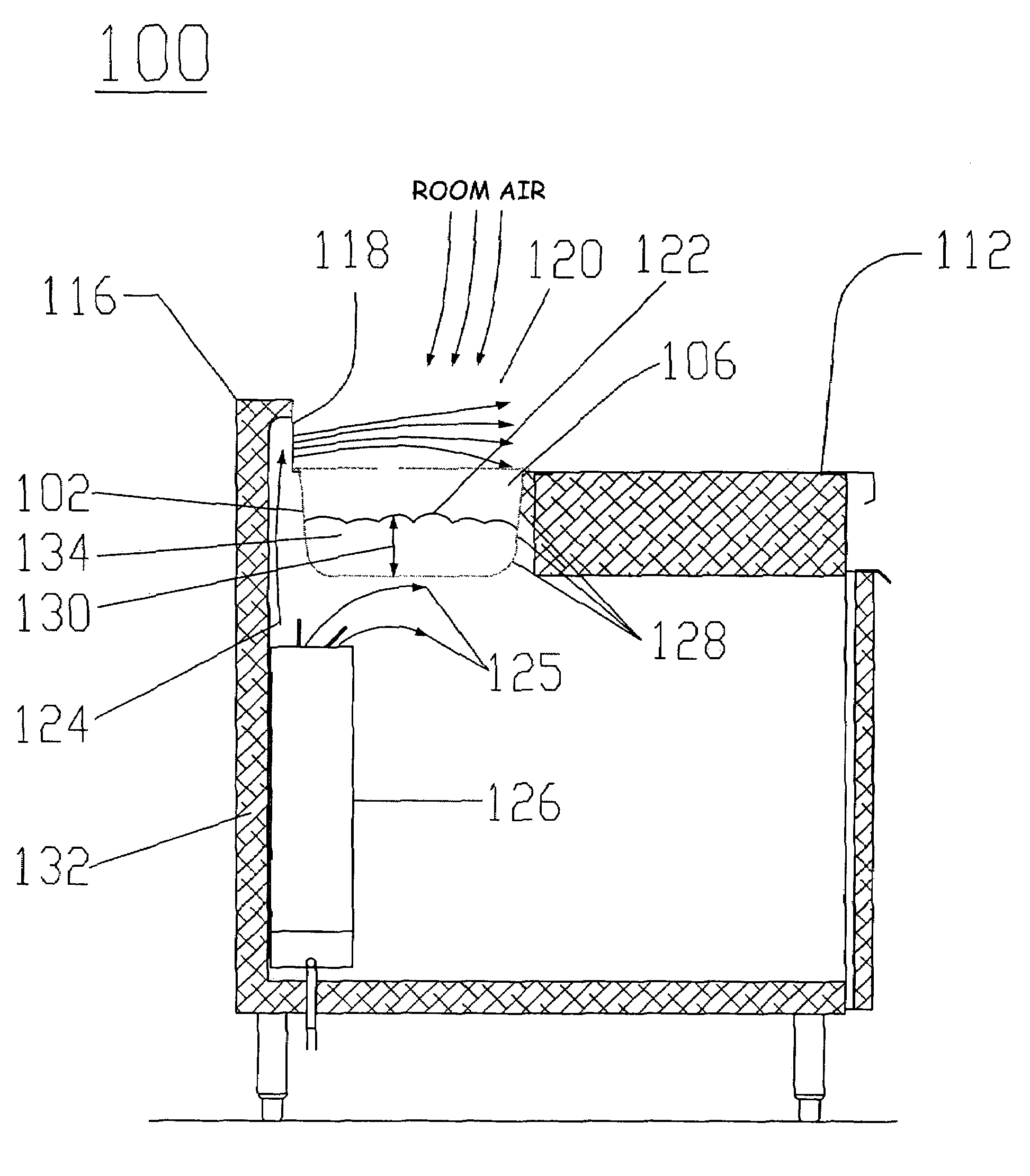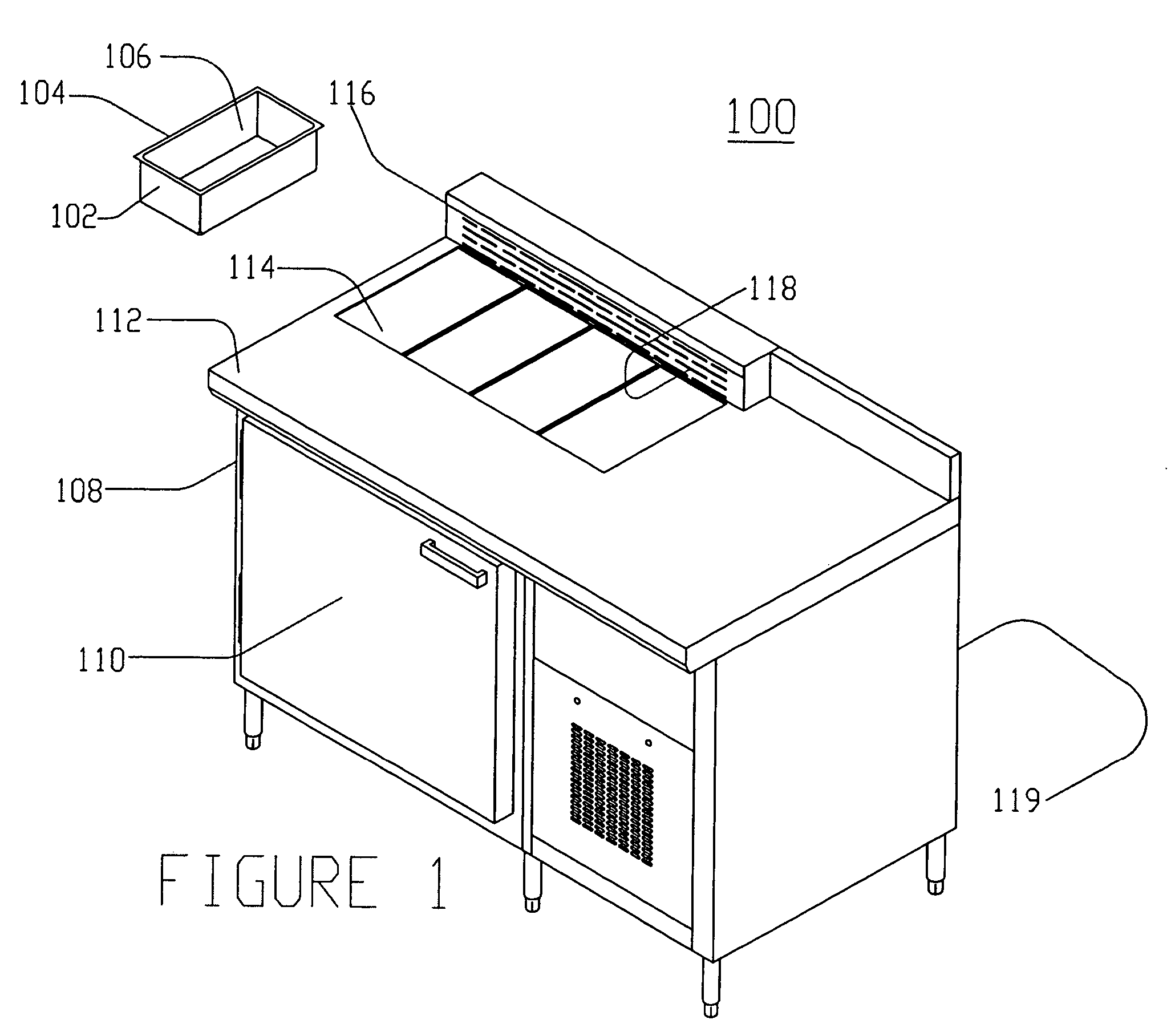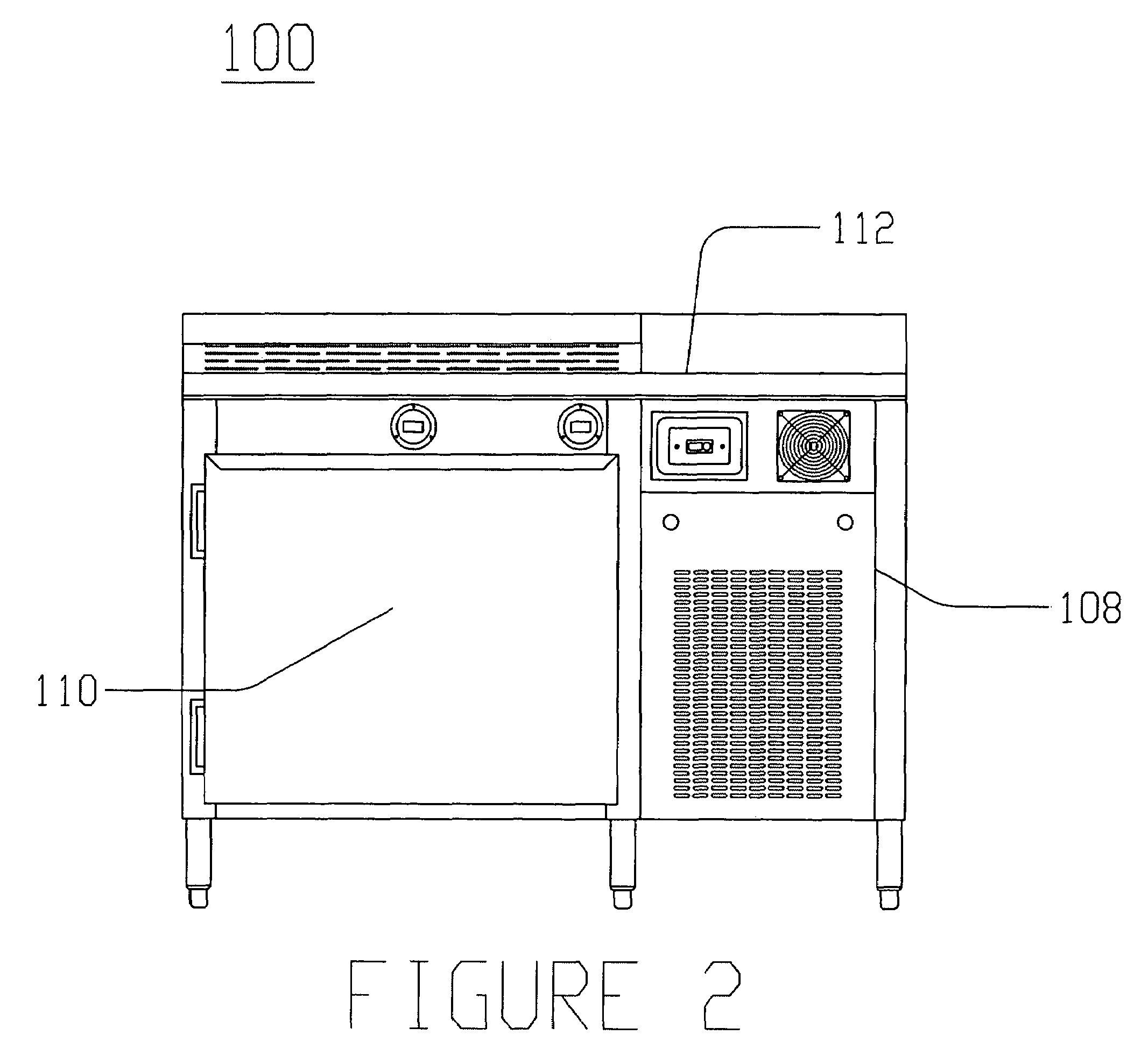Air blanketed food preparation table
a technology of food preparation table and air blanket, which is applied in the direction of lighting and heating apparatus, show cabinets, domestic cooling devices, etc., and can solve problems such as adversely affecting performan
- Summary
- Abstract
- Description
- Claims
- Application Information
AI Technical Summary
Benefits of technology
Problems solved by technology
Method used
Image
Examples
third embodiment
[0083]Referring to FIG. 8, a food preparation table 300 of the invention having a single row of food pans arranged in a single step configuration is shown. Features or components similar to the previously described embodiments may not be discussed in detail herein. The food preparation table 300 has a cabinet 308, which has a front surface 310 and a top surface 312. The cabinet 308 includes a cooling housing 320 for housing a compressor or similar unit for cooling the table. Disposed within the top surface 312 of the food preparation table 300 are 14 food pan wells 302 provided in two groups of seven pans. The 14 food pan wells 302 are configured to hold food pans therein and are arranged in a row near the back of the top surface 312. Next to the food pan wells 302 is air header assembly 316 provided in a raised rail. The air header assembly 316 has a series of air vents 318 therein. The air vents 318 are positioned to direct chilled air from the interior of the table over and into ...
fourth embodiment
[0086]Referring to FIGS. 11 and 12, a food preparation table 400 of the invention having two rows of food pans arranged in a single step configuration is shown. Again, features or components similar to prior embodiments may not be described in detail. Referring to FIG. 11, the food preparation table 400 includes a cabinet 408 having a housing 420 for a compressor or similar unit. The food preparation table 400 has a top surface 412 with a series of openings 401 and 405 for a first row of food pans 402 and a second row of food pans 403. Adjacent to the first row of food pans 402 is air header assembly 416 providing a raised rail with air vents 418 therein. The food preparation table 400 has a front surface 410 which may have doors therein for access into an interior of the food preparation table 400.
[0087]As shown in FIG. 12, a cross section of the food preparation table 400 shows a first row of food pans 402 next to air vents 418 of air header assembly 416, and a second row of food ...
fifth embodiment
[0090]FIGS. 13 and 14 show a food preparation table 500 constructed according to the principles of the invention having three rows of food pans arranged in a single step configuration. As shown in FIG. 13, the food preparation table 500 has a cabinet 508 with a cooling unit housing 520. The cabinet 508 has a front 510 and a top surface 512. At a rear portion of the top surface 512 is a raised rail having an air header assembly 516 with air vents 518 therein. Disposed in the top surface 512 of the food preparation table 500 is a first row 502, a second row 503, and a third row 505 of food pans. The first row of food pans 502 is arranged next to the air header assembly 516 and vents 518. The second row of food pans 503 is between the first row of food pans 502 and the third row of food pans 505. Accordingly, the first row, second row, and third row of food pans 502, 503 and 505 are arranged so that each row may sequentially receive low velocity chilled air discharged from the air vent...
PUM
 Login to View More
Login to View More Abstract
Description
Claims
Application Information
 Login to View More
Login to View More - R&D
- Intellectual Property
- Life Sciences
- Materials
- Tech Scout
- Unparalleled Data Quality
- Higher Quality Content
- 60% Fewer Hallucinations
Browse by: Latest US Patents, China's latest patents, Technical Efficacy Thesaurus, Application Domain, Technology Topic, Popular Technical Reports.
© 2025 PatSnap. All rights reserved.Legal|Privacy policy|Modern Slavery Act Transparency Statement|Sitemap|About US| Contact US: help@patsnap.com



